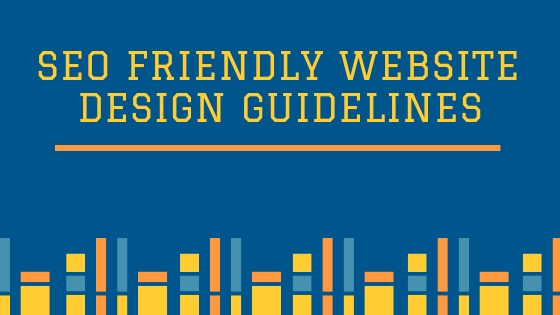In order to understand Search Marketing and its components SEO and SEM, it is important to know the impact of this kind of marketing in the web business world.
Search Marketing- You need to understand the terminology for this type of marketing before you can create a strategic search optimization strategy.
Search marketing relates to any process that helps a brand get attention by appearing on search engine results pages (SERPs). It includes efforts to get higher rankings and increase search visibility so you can drive more traffic to a website or specific webpages.
There are two categories in search marketing:
SEM or Search Engine Marketing uses PAID strategies to increase search and traffic results for a client’s website. It is generally considered a major part of your overall digital marketing strategy. It is a digital marketing process with the goal of increasing visibility in search engines either by getting organic traffic through SEO or paid traffic through PPC (Pay per click) advertising.
Through paid search advertising you need to purchase advertising space in the search engine results. So, instead of trying to rank in one of the top positions organically through SEO and get free traffic, you pay to appear in front of the search results.
The most well-known advertising platform for paid search is Google Ads also known as Google Adwords. With the help of Google Ads, you can get your ads to appear in the Google search results and you pay only for the clicks on your ads. The whole process is called Pay-per-click or PPC. There are other search engines that have a similar system but they are not as popular and successful as Google.
SEO or Search Engine Optimization uses ORGANIC strategies to appear in search. SEO is the process of optimizing your website for the purpose of getting free traffic from search engines. It is important part of setting up a website because an optimized web site is easily understood by search engine crawlers and this increases the chances of ranking higher in SERPS (search engine results pages). In the case of SEO, website owners don’t pay for placement on SERPs. Instead, they use a variety of methods that prompt search engines to show their content near the top of SERPs because the result is valuable and well-targeted.
The components of SEO
There are 3 components of SEO: technical SEO, on-site SEO, and off-site SEO.
Technical SEO is the process of optimizing your website for the crawling and indexing phase. With technical SEO you ensure that search engines can crawl and index your website without any problems. The strategies for this SEO relates to site speed, mobile-friendliness, indexing, crawlability, site architecture, structured data, and security.
On-Site SEO is rules and methods you can apply on individual pages and content so that they optimized for specific keywords. The strategies included in this SEO are keyword research, content creation, and keyword optimization.
For example, you need to have optimized titles, good descriptions, well-formatted URLs, optimized headings (H1, H2), alt text for images and many more.
Off-site SEO refers to the process of getting references or backlinks from other websites for the purpose of increasing your web site’s trust in the eyes of search engines.
This may be confusing for first-timers but it could be imagined like a ranking system wherein the website that has the most references, ranks higher.
References, in this case, are links coming from other web sites to your site. That is also the reason why off-site SEO strategies are referred to as link building.
Difference between SEO and SEM
The main difference between SEM vs. SEO is that SEM is a paid strategy and SEO is an organic strategy.
| SEO |
SEM |
| It does not include any references to Ads as no paid search methods are used. |
Includes Ad Designation or marking. |
| Search results are featured as snippets. |
Search results include Ad extensions like additional links, addresses, and contact details. |
| Search results are organic and nothing is paid for clicking ads. |
Search results and ads are paid as PPC method and the brand is charged as per the set budget. |
| The target audiences cannot be selected. |
The target audiences can be selected as per age, gender, demographics, interests, etc. |
| The impact takes time as traffic is generated organically. It can take months to improve search rankings of your page. |
The impact is immediate as your ads start showing in SERPs and you can manage the visibility using filters or changing the allocated budget. |
| You cannot make changes or manage results as the updates are time-consuming. |
It is a flexible method where you can make changes or improvise your campaign as per the performance as the search data becomes available soon as the ads are clicked. Hence its flexibility allows you to strategize your campaign successfully. |
| It adds value to your website overtime hence it is beneficial in the long run. |
The ads and campaigns stop right away once the campaign ends or your budget freezes off. Hence it’s not a long term method. |
| You can get a higher click-through-rate (CTR) if your SEO is strong enough to land on top of the search. In that case, it will work better than SEM. |
SEM ads work better than SEO if your organic ads do not land on top or on the second page or lower. In that case, SEM achieves better CTR. |
So, which is better depends on your overall digital marketing goals. If you want to get traffic fast then you can start with SEM (paid search advertising) and in parallel work on your SEO. If you want to create a long-lasting online business without relying on paid traffic, then SEO is your answer.
Does SEM help SEO?
Despite what many people think, SEM does not help SEO. If you use PPC to target specific keywords and get search engine traffic, that doesn’t positively or negatively affect your SEO efforts.
SEO rankings are decided after taking into account hundreds of factors and SEM or PPC campaigns are not a part of them.
How SEO and SEM are related to each other?
There are some common points and strategies which make them similar to each other.
The goal of both SEO and SEM is that they aim to help a brand appear in prominent positions on SERPs. The goal of each tactic is to help a brand show up in search results when users search for specific terms related to the brand’s industry, business, or offerings.
The goal of both is to gain visibility on SERPs, but more importantly, to drive traffic to a website. Each strategy employs tactics to increase click-through-rates (CTR) and get more users to click on the search results.
In order to succeed in both strategies, you must have a good understanding of your audience and how they act. By using buyer behavior and psychographic analysis, you can get to know your audience, discover what their needs are, and what they are searching for. Then you can create valuable content that shows up when they go looking for solutions related to your brand.
The first step for both SEM and SEO is performing keyword research to identify the best keywords to target. The research includes looking at keyword popularity to determine the top keywords or impact keywords that your ideal audience searches for. It also includes looking at keyword competition to see what other brands are targeting the same keywords and determining what you will need to do to compete with those other companies.
While performing SEM and SEO you will find out that neither is a strategy that you can set and forget. Both require continuous testing, monitoring, and optimization to increase performance.
SEO or SEM? What tactic would you choose out of the two?
To determine what tactic out of SEO and SEM will be better for your business following points would be worth considering:
Competitor Analysis– To decide which is right for your brand, look at what your competitors are doing and how they are performing in their search marketing before you decide how you can best compete with them. Research what search terms they rank organically for. Consider if you can execute a plan to top their SERP placements. Also, look at what paid terms they are using to drive traffic to their own sites. As you perform this research, look for gaps that you can fill and areas where you will be unable to compete in both paid and organic search.
If you have been in business for a while and already know what your customers want and how to best reach them, you may want to start to build a long-term SEO strategy that will provide value over time. If you aren’t sure how customers and competitors will respond to your offerings or content, you may want to consider an SEM campaign that allows you to test your ideas, products, and services.
Customer buying cycle– If your products and services have a short customer buying cycle, meaning your customers know what they want, search for it, and buy it, you may benefit from SEM ads that put your product right where customers will see it. Longer buying cycles, where customers research and compare for weeks or months, may not perform as well with SEM, as there isn’t an immediate buy after seeing one ad.
Cost per click average– Before deciding that SEM is right for your business, research and consider how much you’ll need to spend to show in paid search results. Keywords have varying cost-per-clicks based on competition. If your cost-per-click is low, it might be the right strategy for you. On the flip side, a very high cost-per-click might make you decide you’re better off focusing on SEO.
Timeline of your business– If you just opened your business and launched your website, it’s going to take time to develop your SEO and begin to appear organically in the search. While that doesn’t mean you shouldn’t put together an SEO strategy, it does mean that you could benefit from an SEM strategy until you build your SEO. SEM is an effective way to drive traffic while building organic SEO.
Website analytics research– So before you launch a search marketing campaign, research your website to see where you may have the potential to grow an organic SEO strategy that is already working before putting money into an SEM campaign.
Summary
A successful search marketing campaign requires efforts on both SEO and SEM strategies. Some businesses may choose to focus on SEO. Others may choose to focus on SEM. But most of the time, the right approach is to implement a combination of both SEO and SEM strategies. It all depends on your unique business and goals.
But now that you know the similarities and differences between SEM and SEO, you’ll be better equipped to decide how each can help your brand reach its goals.










 Let’s discuss each of the above points;
Let’s discuss each of the above points;
